|
| August is the month the Richmond City Council traditionally takes a hiatus, and it is therefore vacation time for City Council members. This year, the break was scheduled from July 23 to September 10, but the shocking and unanticipated firing of the city manager on July 23 complicated things. We went through three city managers in three weeks, having to call two special meetings, the first on July 27 to appoint Henry Gardner acting city manager, and the second on August 13 to appoint Steven Falk interim city manager.
Shirley and I (and the whole 11-person Butt family) managed to get in a trip to Alaska in between the two special meetings (North to Alaska, August 14, 2019), and with Richmond’s third city manager in three weeks sworn in, we headed for the Arkansas Ozarks and then finally to Burning Man.
We have been going to Fayetteville for the Roots Festival, a celebration of music and food) for several years. Roots music is a little hard to define, but according to Wikipedia, it is “ Americana (music), a style incorporating early blues, country, folk, rhythm and blues, and rock influences.”
We started with the now traditional float trip on the Buffalo National River, about a 5-hour paddle from Tyler Bend to Gilbert. Each time we visit, we change locations on the river depending on the water level. We picked up our lunch, ham sandwiches from Coursey’s Smoked Meats in St. Joe.
On the way back to Fayetteville, we had dinner at the 100-year old Ozark Café in Jasper.

Figure 1 - Iconic bluffs of the Buffalo

Figure 2 - Time for a swim

Figure 3 - It was hot, but partly cloudy made it comfortable
While waiting for the Roots Festival to begin, I made some structural repairs on the 60-year old pole barn at Deepwood. Unfortunately, there is a geologic fault that runs right through the barn, and it has been slipping a few inches downhill for years. Most of the poles and beams have bent without breaking, but there were split beams in a couple of locations.
The neighbor’s house next door is being demolished this week because the slippage on the same fault has literally torn the building apart to the point that is too expensive to salvage.

Figure 4 - Deepwood Barn

Figure 5 - Bracket installed to mitigate a cracked beam
I also made drawings of what we call “the studio” in preparation for a future rehabilitation. Architect and Professor Herb Fowler, who designed and built Deepwood, once used this building as his architectural studio, but it has been flooded by groundwater for years. Hopefully, we can dry it out and put it to some productive use. The old stone walls were probably part of an old homestead that may be 150 years old, but the roof and upper walls were added in the 1990s.

Figure 6 - The “Studio” at Deepwood
With thunderstorms forecast, the Roots Festival opened indoors at Fayetteville Town Center on Thursday night instead of outdoors at Pratt Place. The next day was really a treat for aging Ozark music lovers with Huntsville native Ronnie Hawkins in town for the first time in over a decade. Currently residing in Ontario, Canada, the 84-year old Hawkins is an American rock and roll musician whose career has spanned more than half a century. His career began in Arkansas, where he was born and raised. After establishing himself in Arkansas in the early 1960s, Hawkins later found success in Canada, and has lived there for most of his life. He is considered highly influential in the establishment and evolution of rock music. Hawkins was born in 1935 in Huntsville, Arkansas, two days after the birth of Elvis Presley. When he was nine years old, his family moved to nearby Fayetteville, Arkansas. After graduating from high school, he studied physical education at the University of Arkansas, where he formed his first band, the Hawks. He toured with them throughout Arkansas, Oklahoma and Missouri. Hawkins also owned and operated the Rockwood Club in Fayetteville, where some of rock and roll's earliest pioneers came to play including Jerry Lee Lewis, Carl Perkins, Roy Orbison and Conway Twitty.
Also known as "Rompin' Ronnie", "Mr. Dynamo", or simply "The Hawk", he was one of the key players in the 1960s rock scene in Toronto. Throughout his career, Hawkins has performed all across North America and recorded more than twenty-five albums. His hit songs included covers of Chuck Berry's "Thirty Days" (entitled "Forty Days" by Hawkins) and Young Jessie's "Mary Lou", a song about a "gold-digging woman” Other well-known recordings are "Who Do You Love?", "Hey Bo Diddley", and "Susie Q", which was written by his cousin, rockabilly artist Dale Hawkins.
Hawkins is also notable for his role as a talent scout and mentor of musicians he recruited for his band the Hawks. Roy Buchanan was an early Hawks guitarist on the song "Who Do You Love". The most successful example were the musicians who left him to form The Band. Other musicians Hawkins had recruited went on to form Robbie Lane and the Disciples, Janis Joplin's Full Tilt Boogie Band, Crowbar, Bearfoot, and Skylark.

Figure 7 - With Ronnie Hawkins at the Fayetteville Public Library Reception
Another homegrown band, the Cate Brothers, now on their late seventies, finished their set with “The Weight” inviting up several other local musicians and Amy Helm (Levon Helm’s daughter.” Then, Ronnie Hawkins received the “Crazy Chester Award,” named after a legendary Fayetteville character.
"The Weight" is one of The Band's best known songs, gaining considerable album-oriented rock airplay even though it was not a significant hit single for the group in the U.S., peaking at only #63.[8] The Band's recording fared much better in Canada and the UK – in those countries, the single was a top 40 hit, peaking at #35 in Canada and #21 in the UK in 1968. The song had three cover releases in 1968 and 1969 with arrangements that appealed to a diversity of music audiences. The Band's version credits the group's individual members—Jaime Robbie Robertson, Rick Danko, Richard Manuel, Garth Hudson and Levon Helm—on the record label, rather than The Band as a single entity.
The colorful characters in "The Weight" were based on real people members of The Band knew, as Levon Helm explained in his autobiography, This Wheel's on Fire. In particular, "young Anna Lee" mentioned in the third verse is Helm's longtime friend Anna Lee Amsden, and, according to her, "Carmen" was from Helm's hometown, Turkey Scratch, Arkansas. "Crazy Chester" was an eccentric resident of Fayetteville, Arkansas, who carried a cap gun. Ronnie Hawkins would tell him to "keep the peace" at his Rockwood Club when Chester arrived.

Figure 8 - The Cate Brothers with Amy Helm (Video https://www.youtube.com/watch?v=a1F9cdou_gc)
Another hit legend was 80-year old Mavis Staples whose voice and Pops' songs, singing, and guitar playing evolved from enormously popular gospel singers (with recordings on United and Riverside as well as Vee-Jay) to become the most spectacular and influential spirituality-based group in America. By the mid-1960s The Staple Singers, inspired by Pops' close friendship with Martin Luther King, Jr., became the spiritual and musical voices of the civil rights movement. They covered contemporary pop hits with positive messages, including Bob Dylan's "A Hard Rain's a-Gonna Fall" and a version of Stephen Stills' "For What It's Worth".

Figure 9 - Mavis Staples
There were workshops as well as performances. Al Bell is an American record producer, songwriter, and record executive. He is best known as having been an executive and co-owner of Stax Records, based in Memphis, Tennessee, during the latter half of the label's 19-year existence

Figure 10 - Al Bell talked about the evolution of Stax Records in Memphis
A big hit was Rhiannon Giddens, a founding member of the country, blues and old-time music band Carolina Chocolate Drops, where she is the lead singer, violinist, and banjo player. Giddens is a native of Greensboro, North Carolina, an alumna of the North Carolina School of Science and Mathematics,[1] and a 2000 graduate of Oberlin Conservatory at Oberlin College, where she studied opera. In addition to her work with the Grammy-winning Chocolate Drops, Giddens has released three solo albums: Tomorrow Is My Turn (2015), Freedom Highway (2017), There Is No Other (2019). The latest album is credited to Rhiannon Giddens with Francisco Turrisi.

Figure 11 - Rhiannon Giddens
One of our favorites was Eliza Gilkyson, whom we have heard many times, including an impromptu performance on the deck of the Baltic some 15-20 years ago. Eliza Gilkyson is an Austin, Texas-based folk musician. She is the daughter of songwriter and folk musician Terry Gilkyson and his wife, Jane. Her brother is guitarist Tony Gilkyson, who played with the Los Angeles-based bands Lone Justice and X. She is married to scholar and author Robert Jensen. Gilkyson is a two-time Grammy Award nominee, receiving a nomination for Best Contemporary Folk Album in 2004 and Best Folk Album in 2014.
The closing act was Rising Appalachia, a musical group lead by multi-instrumentalist sisters Leah and Chloe Smith. Leah performs also as solo artist under the name Leah Song. Based between Southern Appalachia and New Orleans, the sisters work with an array of international musicians and the band incorporates everything from simple harmonics with banjos and fiddles, to a wide variety of drums, kalimbas, beatbox, djembe, baliphone, congas, didgeridoo, tablas, spoons and washboard creating a full mix of world, folk and soul music

Figure 12 - Rising Appalachia
We saw probably two dozen acts in all, but this gives you a flavor of the festival.
One couple we always run into are Denise and Hershey Garner, who were early patrons of the Roots festival. Just last year, Denise won a race for the Arkansas Legislature House of Representatives, a rare victory for a Democrat in what has become a deep red state.

Figure 13 - Denise, Tom, Shirley and Hershey
We arrived back in Richmond on Monday night and after a few hours of sleep boarded the California Zephyr to Reno for a meeting of the US Conference of Mayors Tourism, Arts, Parks, Entertainment and Sports Standing Committee.
The train, by the way, is the way to go. It has leg room, a snack bar, a dining car and incredible scenery. Richmond to Reno for $84.00!
This was not an ordinary US Conference of Mayors meeting; it was all about Burning Man, with sessions that included “How Burning Man Art is Lighting Up Cities Across the Globe” and “Big Arts Little City – How the City of Reno transformed its reputation, culture and community pride with arts and culture investment and support.”
The last session, “Burning Man/Black Rock City Visit,” was hosted by Reno Mayor Hillary Schieve and staff of the US Conference of Mayors, the National Endowment for the Arts and Burning Man. It was a one-day/night trip to Burning Man.
We boarded a bus in Reno at 9:00 AM Wednesday with about 18 other mayors for the two hour ride to Burning Man, after stopping for lunch and credentials in Gerlach. I was surprised to run into a Point Richmond neighbor, Molly, who is on the Burning Man staff and issued our credentials. But maybe I should not have been too surprised; I had learned previously that more Burning Man staff live in Richmond than any other city!
Burning Man is an event held annually at Black Rock City, a temporary city erected in the Black Rock Desert of northwest Nevada, approximately 100 miles north-northeast of Reno. The late summer event is an experiment in community and art, influenced by ten main principles: radical inclusion, radical self-reliance, radical self-expression, communal effort, civic responsibility, gifting, decommodification, participation, immediacy, and leave no trace. The event takes its name from its culmination, the symbolic ritual burning of a large wooden effigy ("The Man") that traditionally occurs on the Saturday evening of the event.
First held 33 years ago in 1986 on Baker Beach in San Francisco as a small function organized by Larry Harvey and Jerry James who built the first "Man", it has since been held annually, spanning the nine days leading up to and including Labor Day (the opening day is a Sunday, while the closing day is the first Monday in September). The 2019 event runs from August 25 to September 2.
It was about 12:30 PM when we finally entered the gates of Black Rock City where the traditional “greeters” boarded the bus wearing little more than smiles. We were told by our hosts to answer in the affirmative when they asked us if we had been to Burning Man previously. A “no” answer would resulted in being dragged off the bus and ordered to roll in the alkali dust as an initiation.
For you city planners, Black Rock City is a huge temporary city, the second largest in Nevada when in session. It is shaped like a giant circular letter “C,” over two miles in diameter and over seven square miles in area, accommodating 70,000 people. At the center is the “man,” burned Saturday night. The outer extremities of the “C” are served by “streets,” with those radiating from the center named for hands of a clock and the circular ones designated “A” through “L” with alphabetical names from “Andromeda” to “Labyrinth.” The alkali desert of Burning Man is called the “Playa.”
In the center are the hundreds of works of art, ranging from as small as a desk to the size of a building.
Arranged along the streets are hundreds of “theme camps” that offer entertainment, services or activities, all at no cost. For example, at Andromeda and 9:45 is “Nipple Crime, offering “Custom Pastie Station 9-5pm every day. Sensual Hotdog Eating 2-4 pm Fri. Pastie Fashion Show how -5 pm Thur.”

Figure 14 - Site Plan of Burning Man
We spent most of the afternoon and evening touring the Playa with interpretation from Burning Man staff members and representatives from the City of Reno and the National Endowment for the Arts. Our transportation was a transformed school bus with blinking lights and a viewing platform on top.

Figure 15 - Our Playa transportation
Dinner was hosted by Deoxidized, a global community of artists, makers, risk-takers, problem-solvers, and dreamers. The dEOxidized camp was founded in 2013 by members and friends of the Entrepreneurs Organization (EO), a global network of entrepreneurs focused on business growth, personal development and community engagement. The 140-person camp is run entirely by volunteers who build the camp, cook the dinners, tend bar, clean up, and break down the camp when it’s done. It is also a theme camp, which means it hosts daily activities such as happy hours and classes.
Following are some of the hundreds of photos taken at Burning Man 2019, as well as half a dozen short videos.

Figure 16 - Reno Mayor Hillary Schieve helping US Conference of Mayors President Bryan Barnett select Burning Man gear

Figure 17 - Waiting for the bus at Silver Legacy Resort Casino

Figure 18 - Mayor's briefing at the Playa

Figure 19 – The [Burning] Man

Figure 20 – Thoughts

Figure 21 - Public transportation

Figure 22 - The Folly will be burned

Figure 23 - Shirley inside The Folly

Figure 24 - This mammoth was sculpted from welded scrap steel by an 18-year old woman from Las Vegas
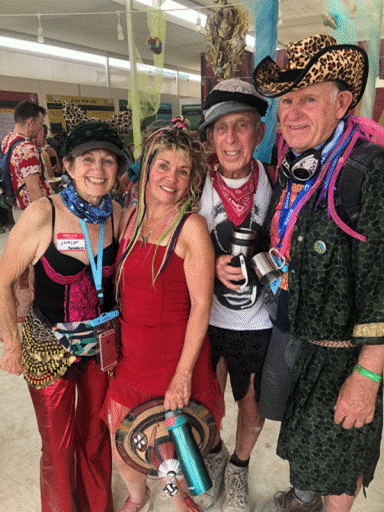
Figure 25 - These folks attended our Barbecue and Bluegrass event twice
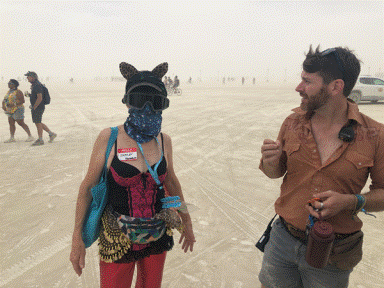
Figure 26 - Shirley preps for the oncoming dust storm

Figure 27 - Full blown dust storm, visibility about 10 feet
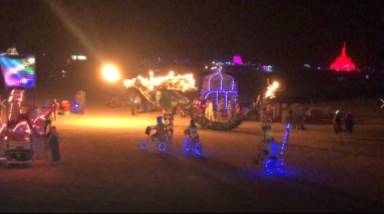
Figure 28 - The Playa lights up at night
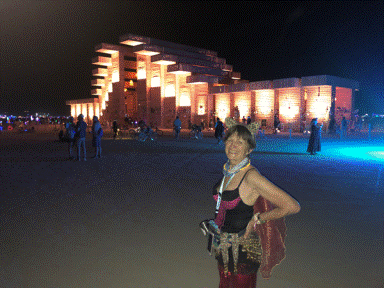
Figure 29 - The Temple and thousands of memorial inscriptions will be burned

Figure 30 - Memorial messages

Figure 31 Dinner at the dOXidized Camp
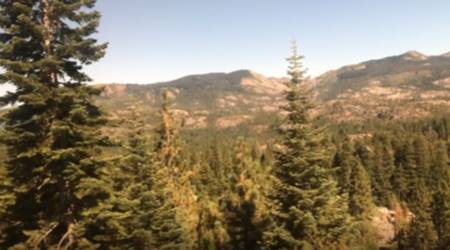
Figure 32 - Sierra Nevada from the train coming back from Reno
|

